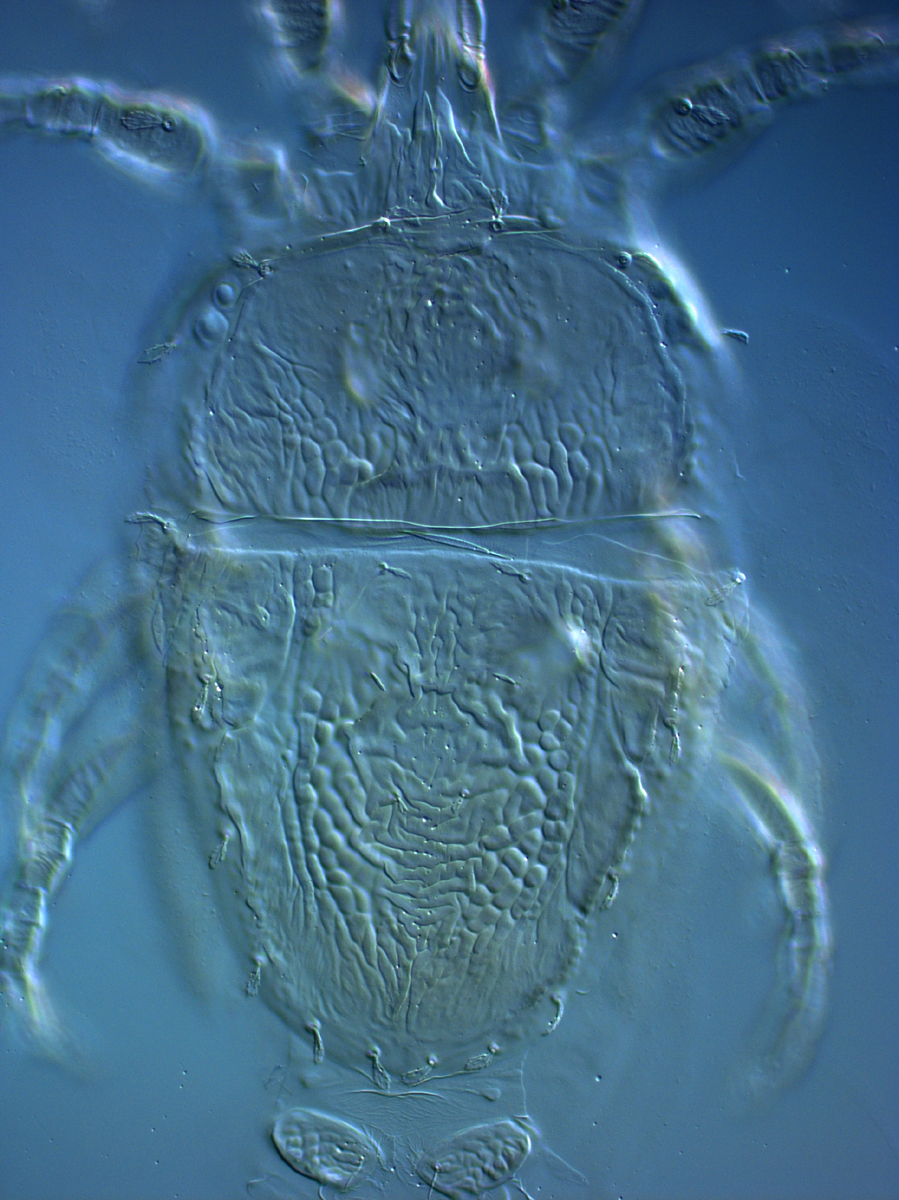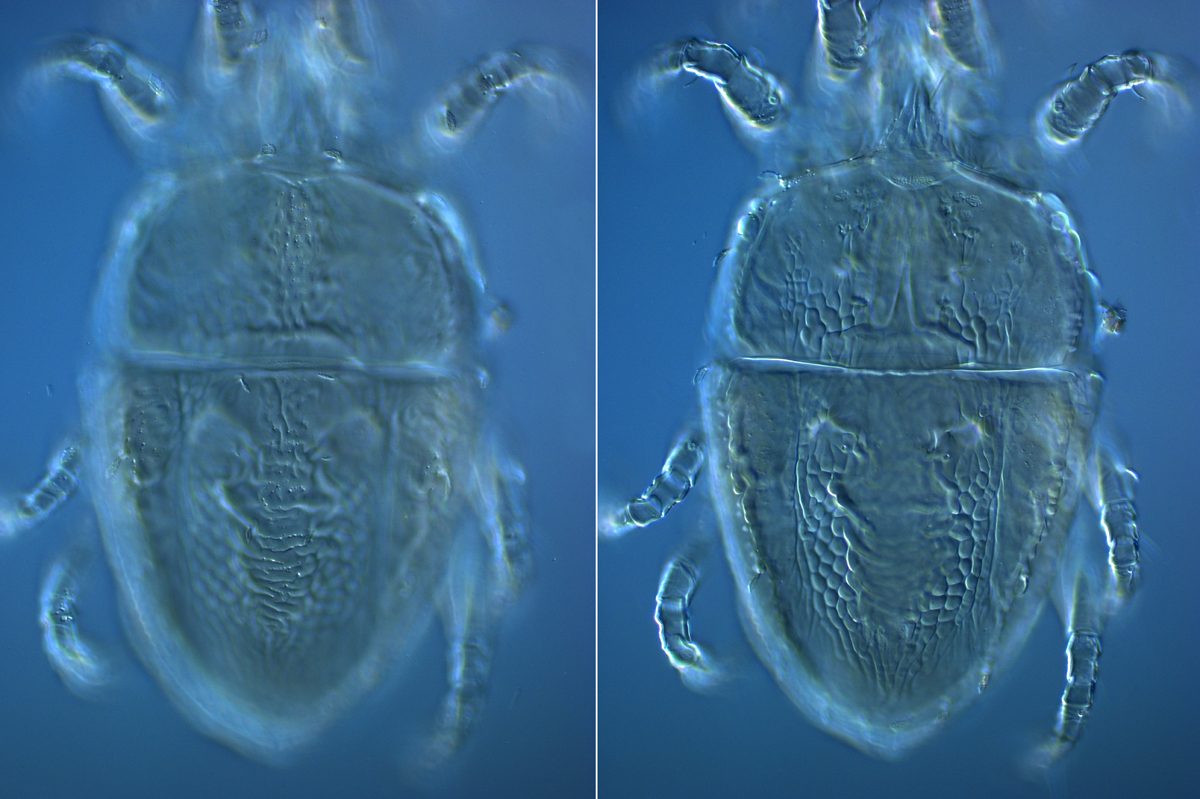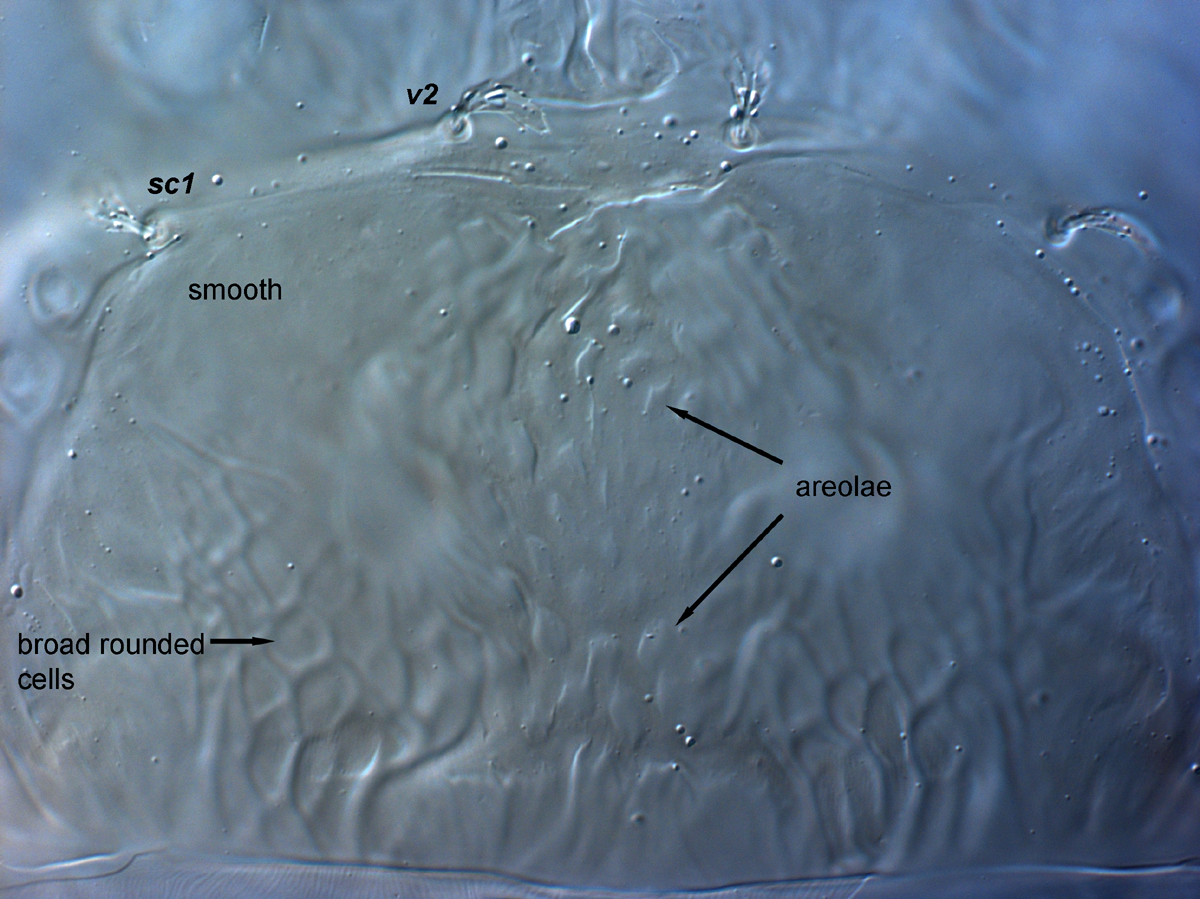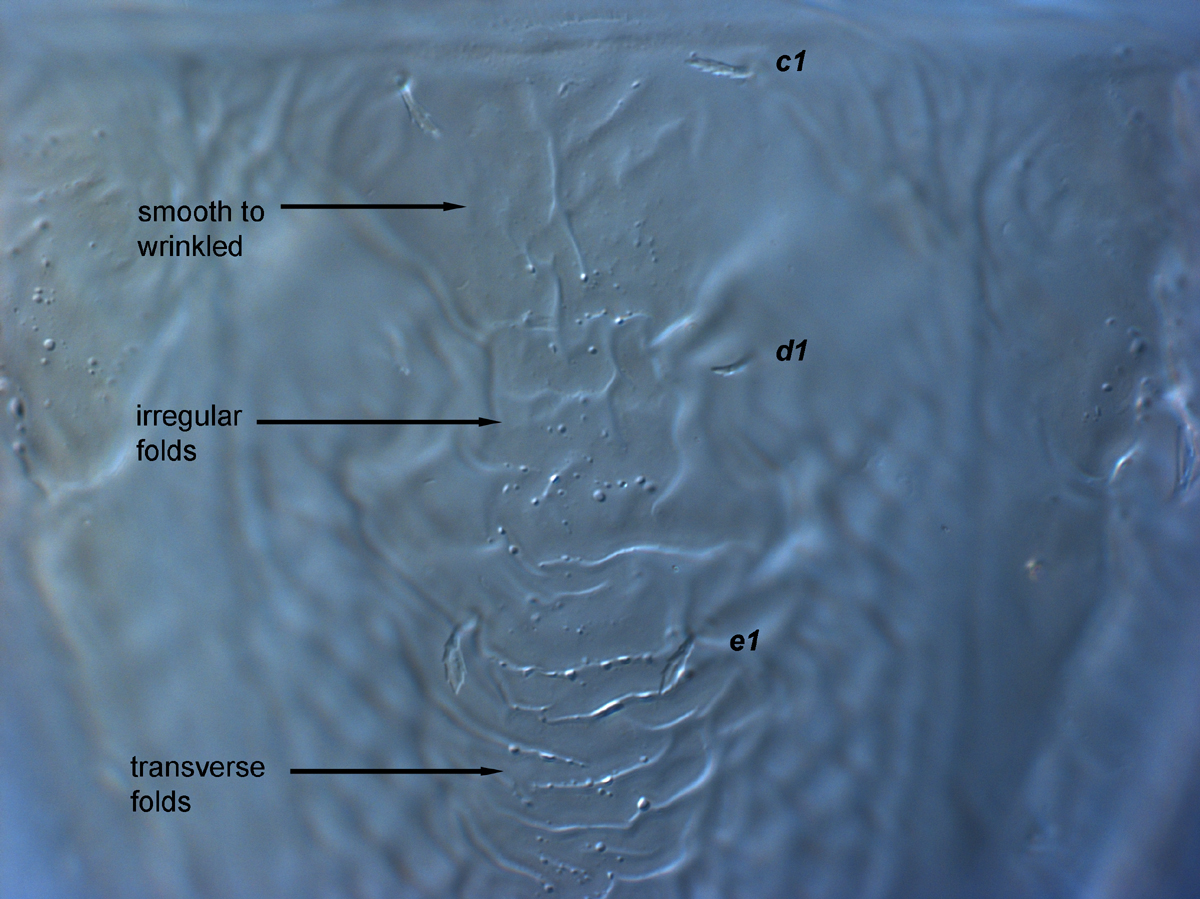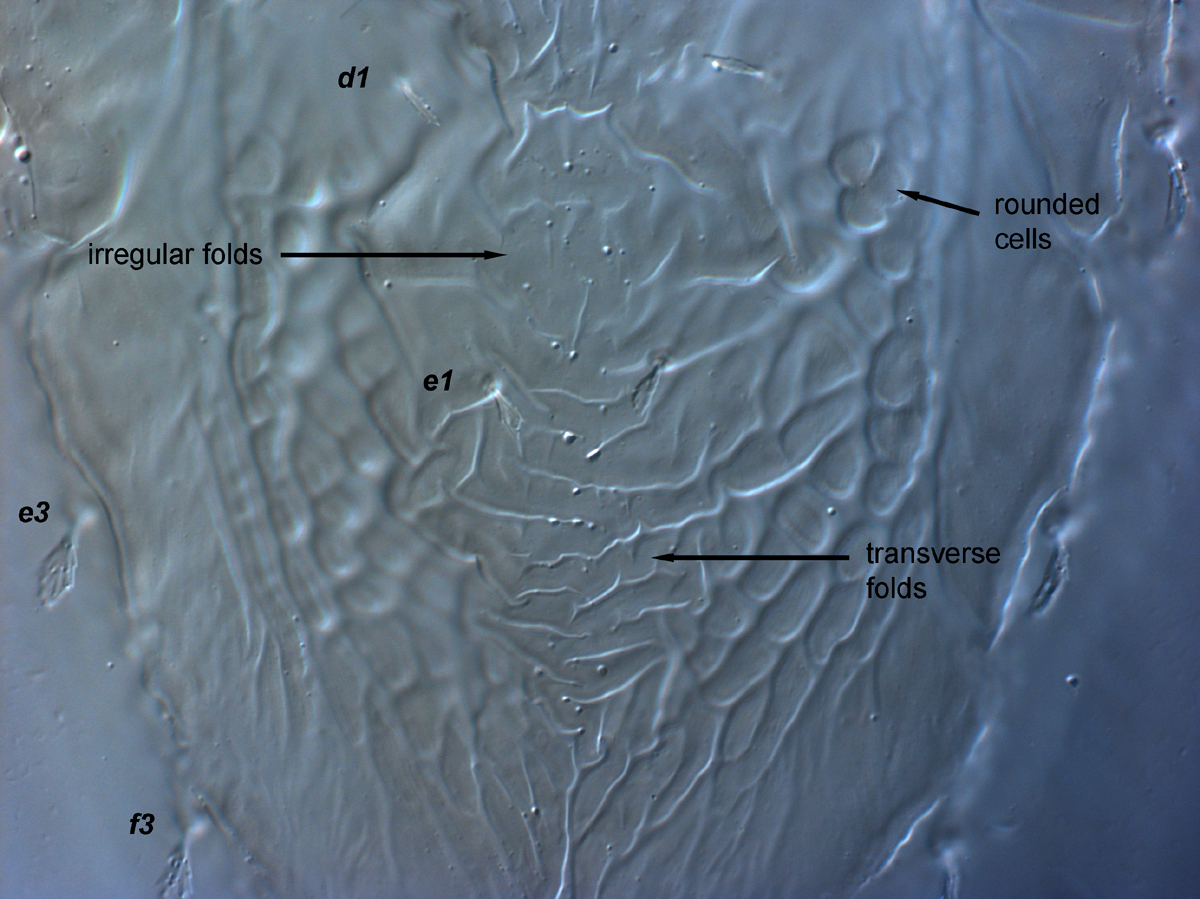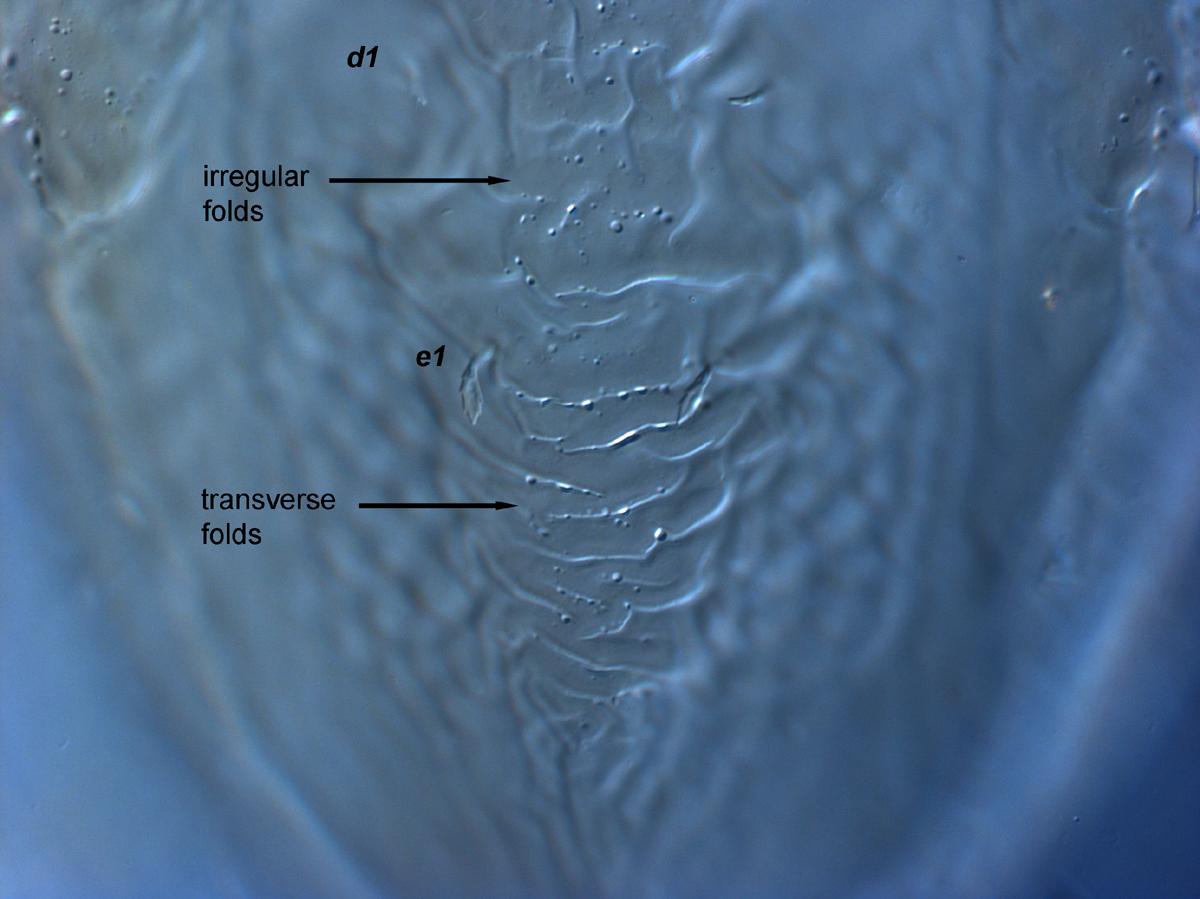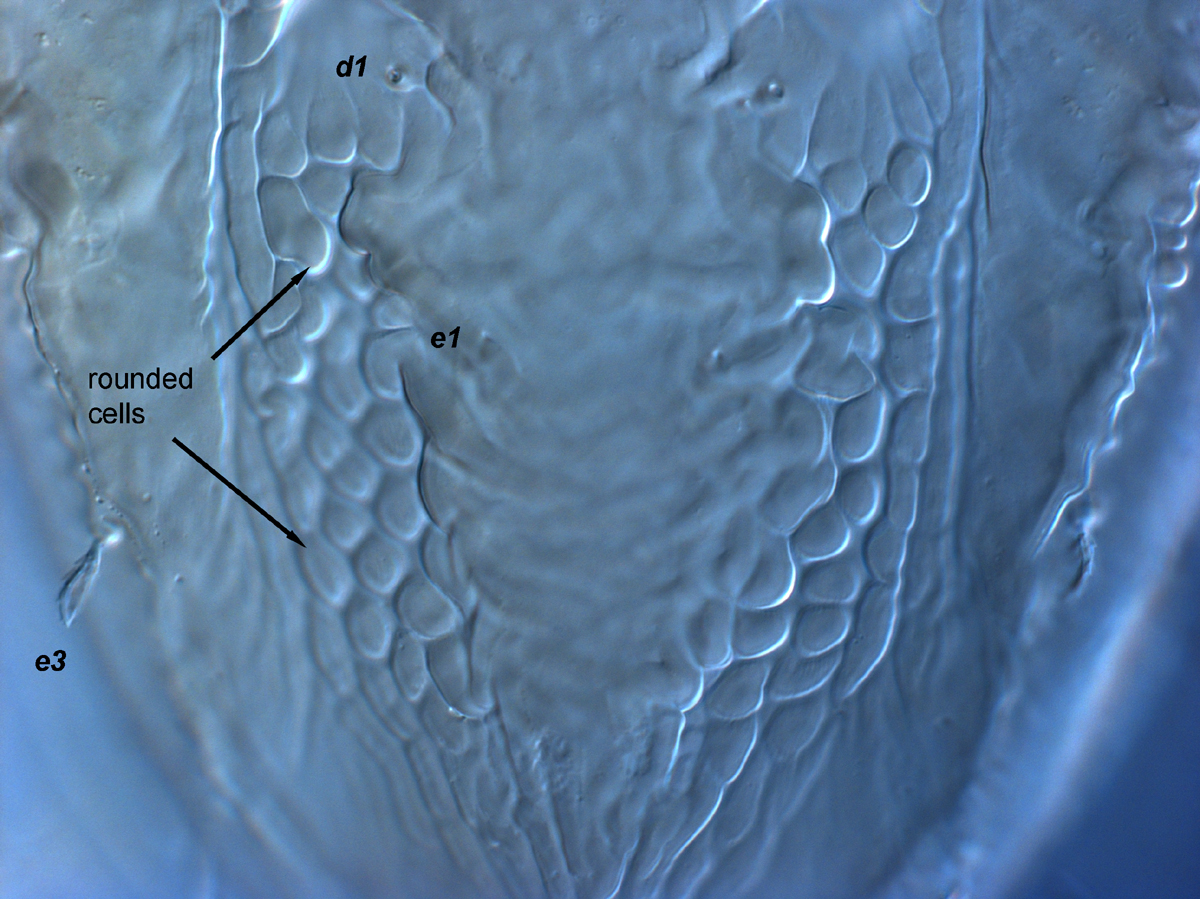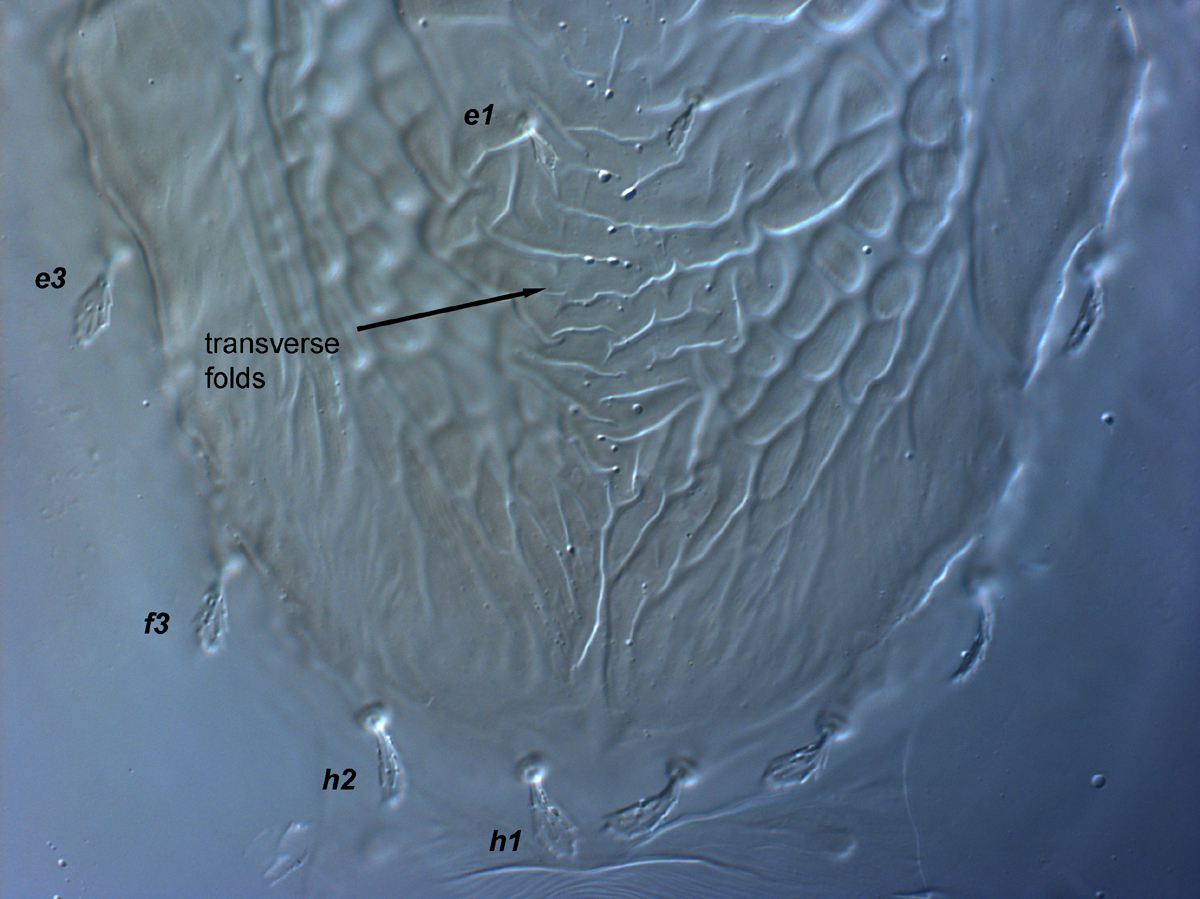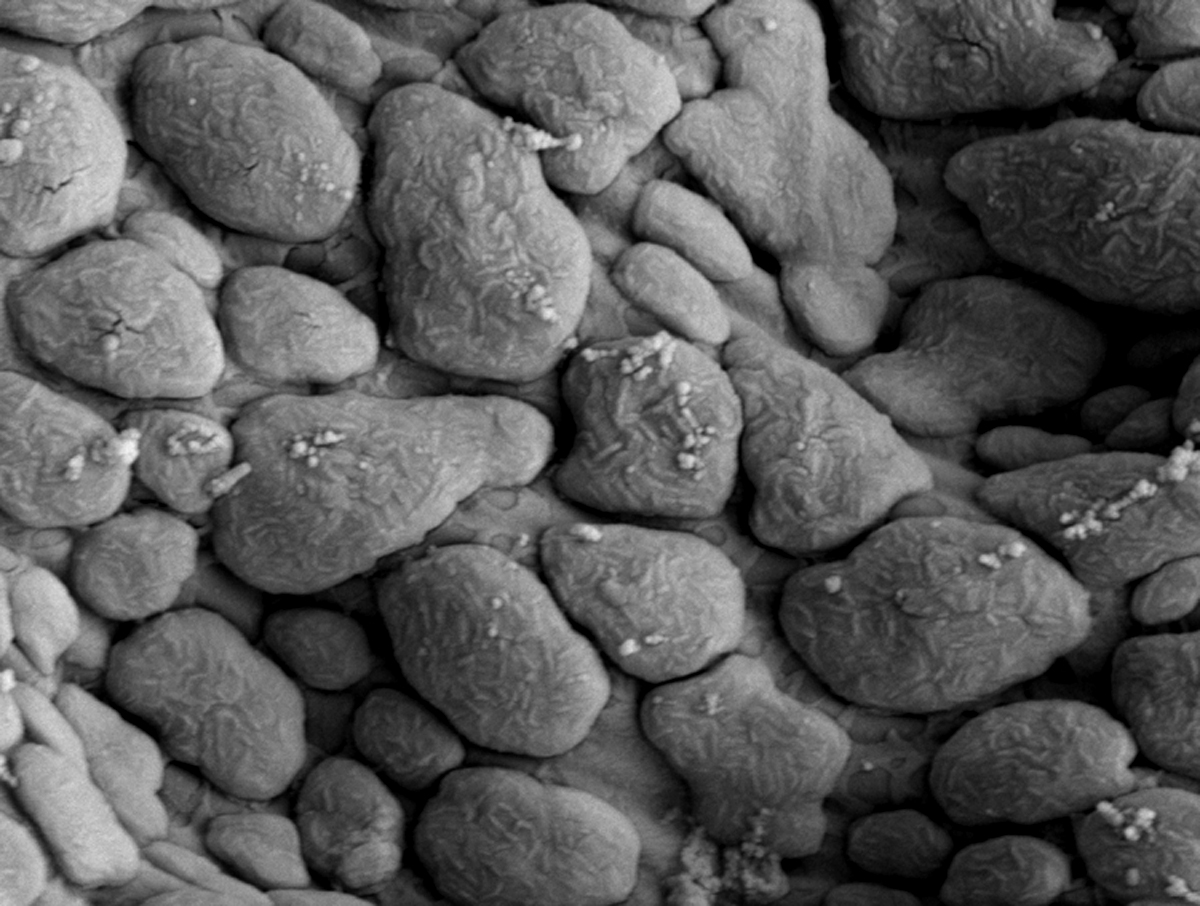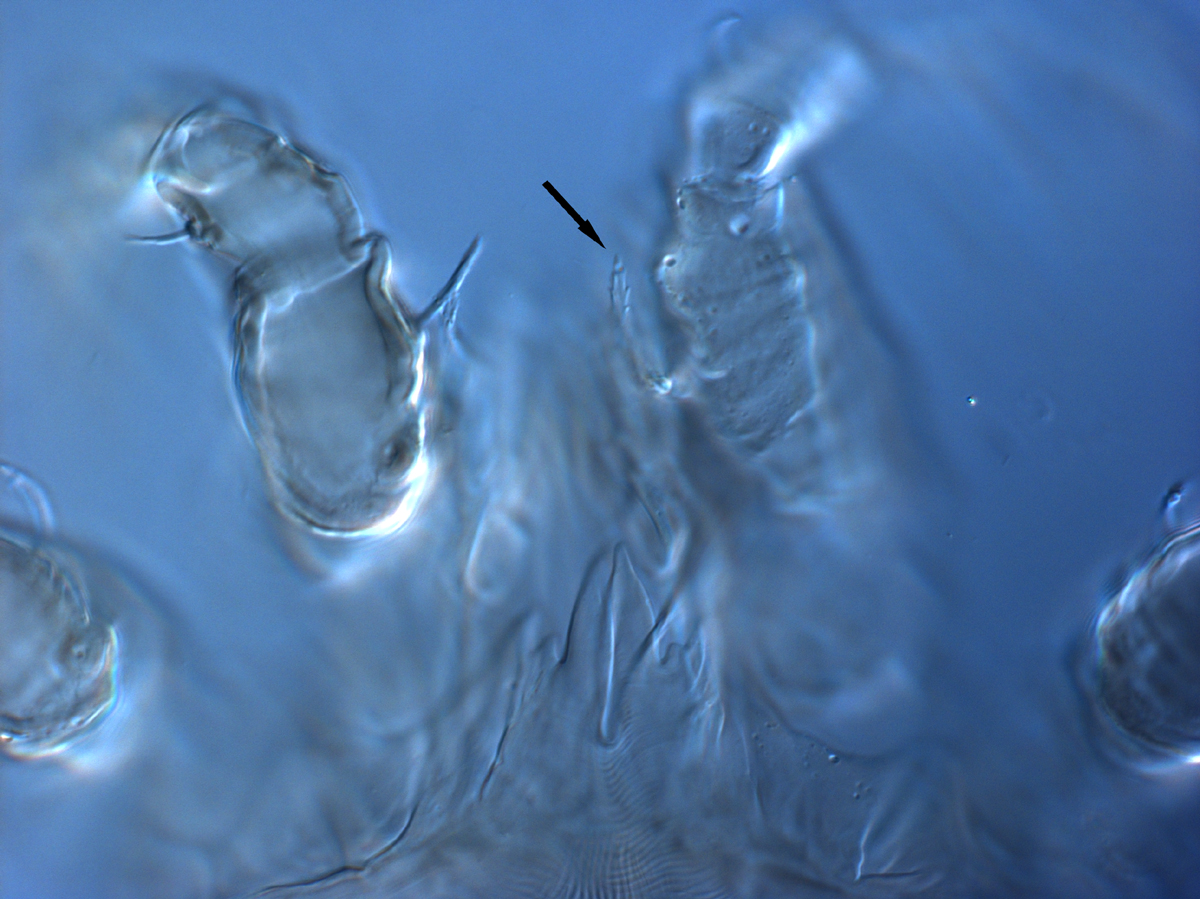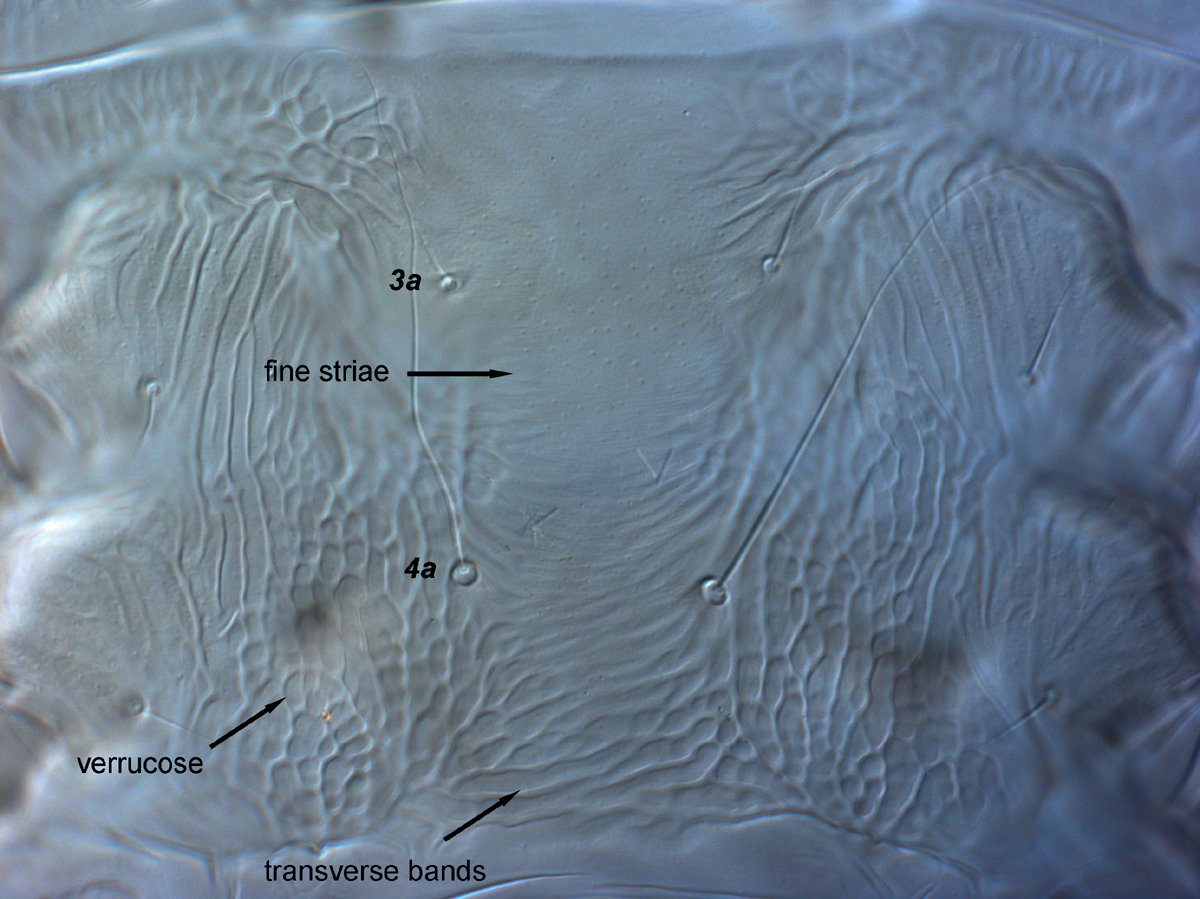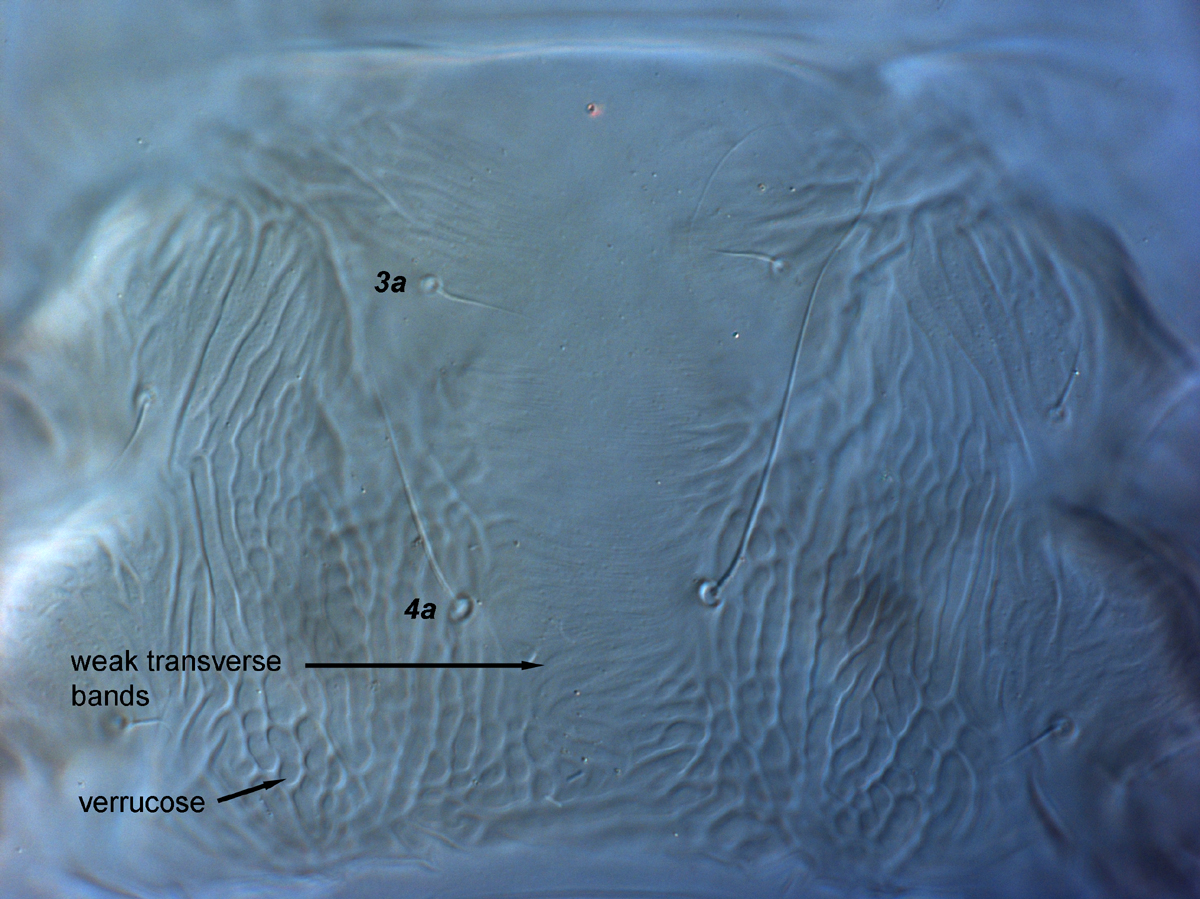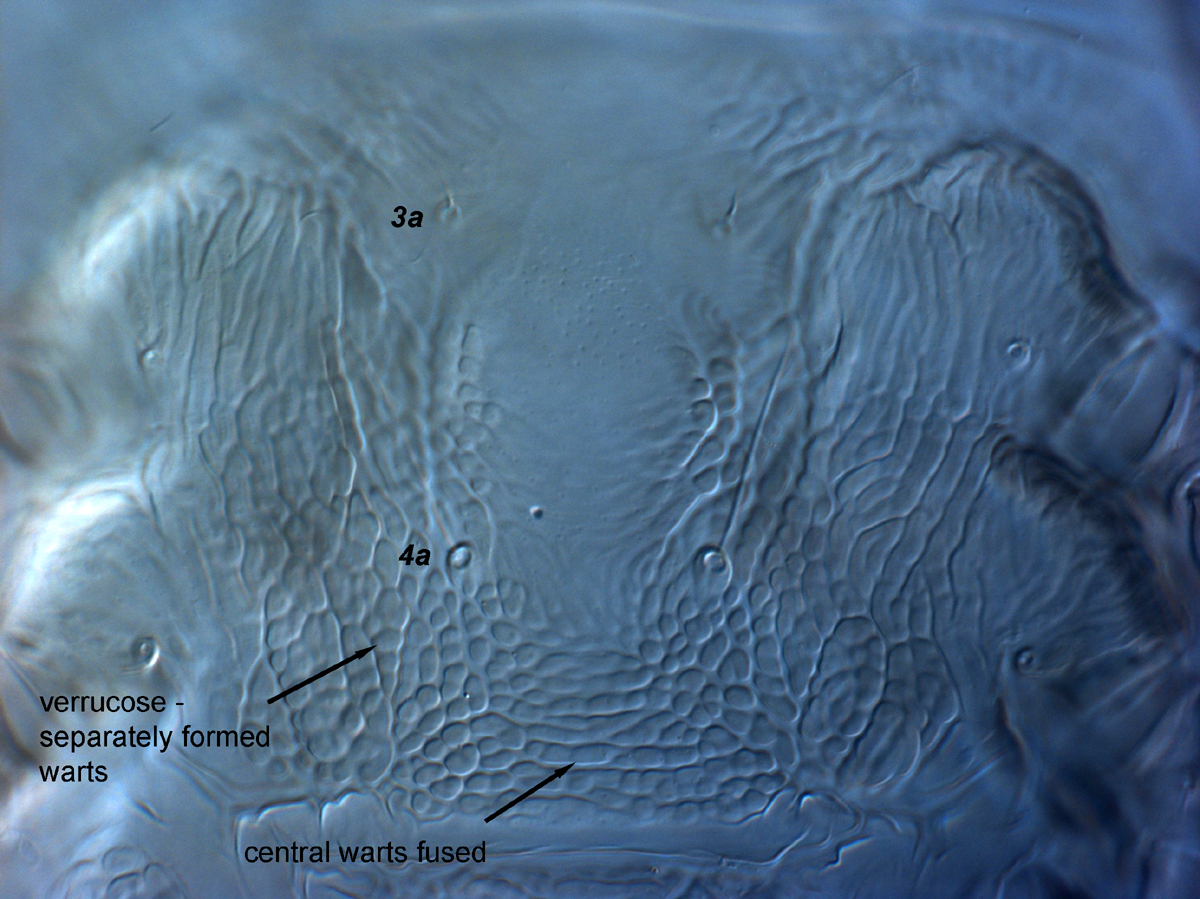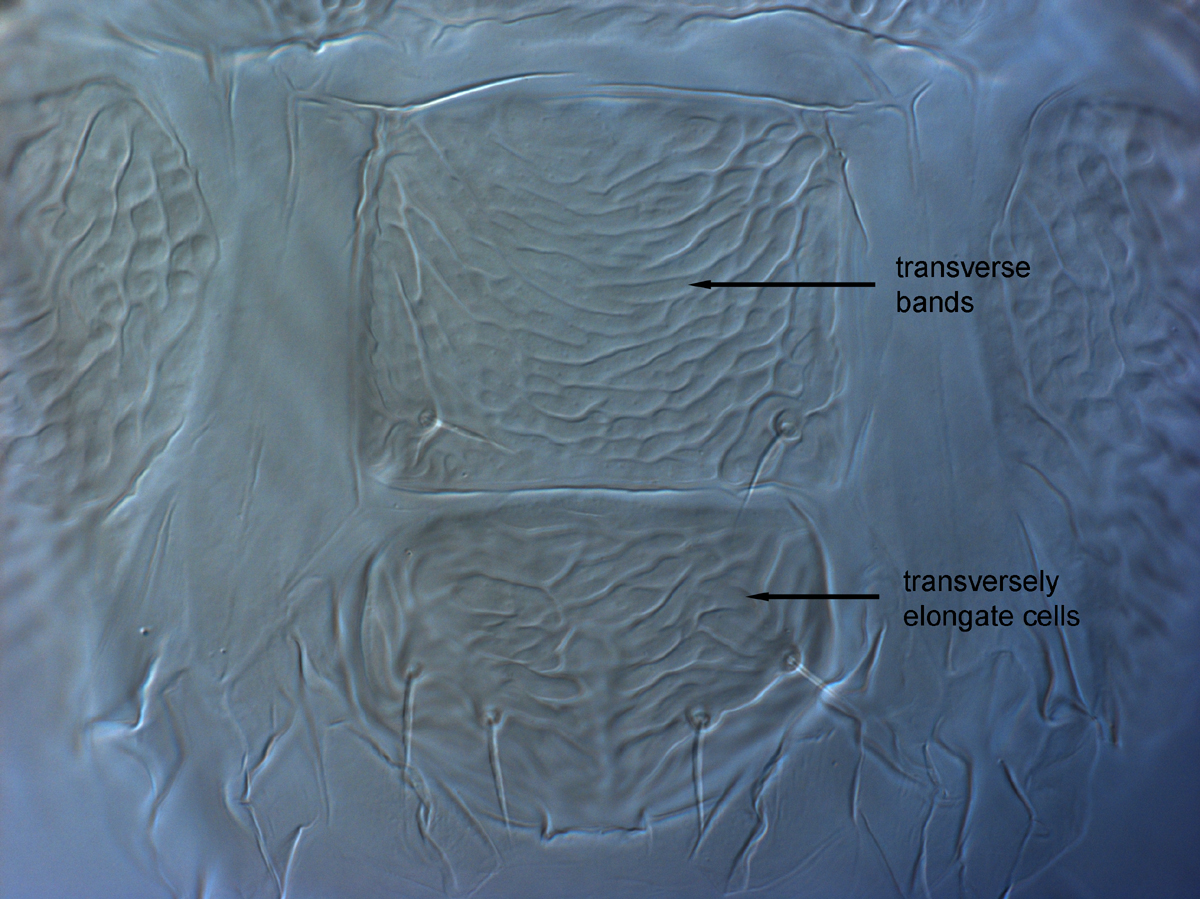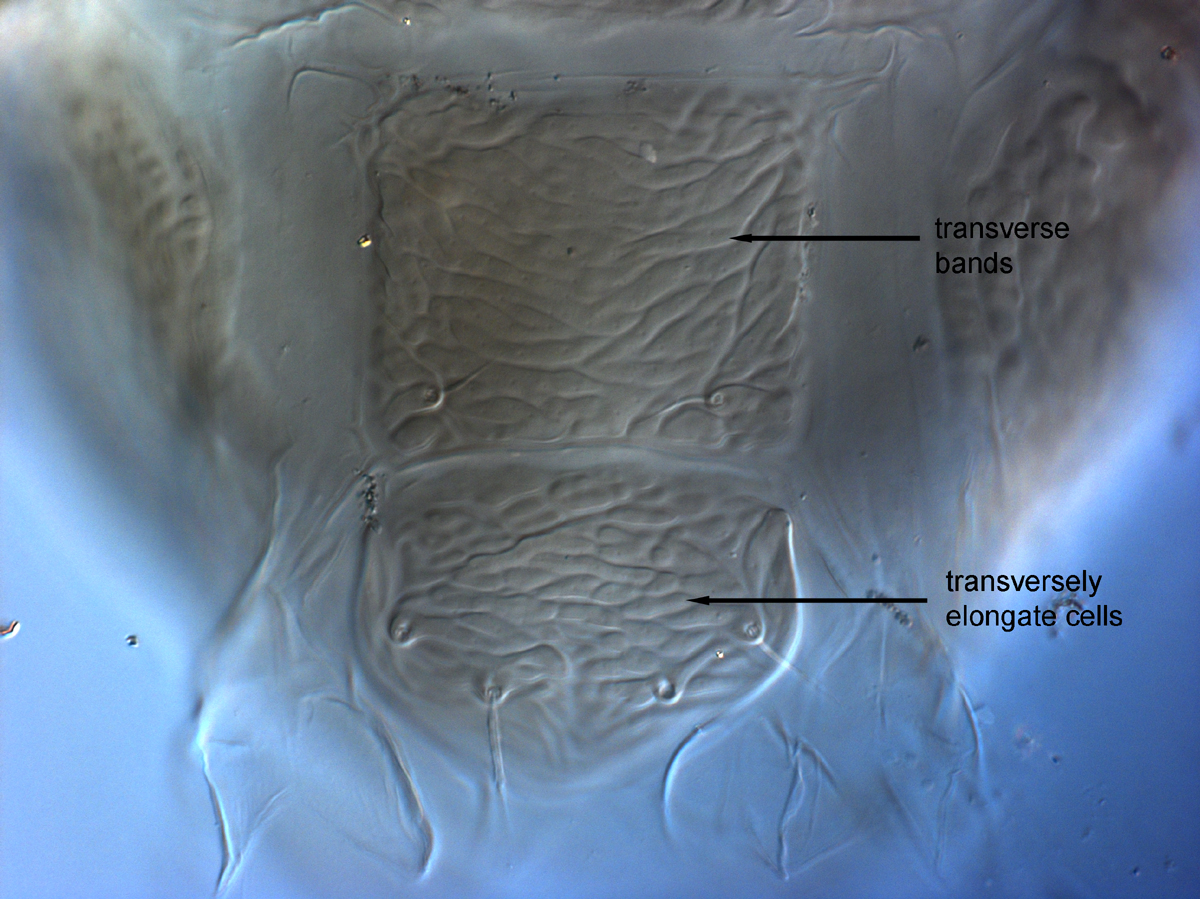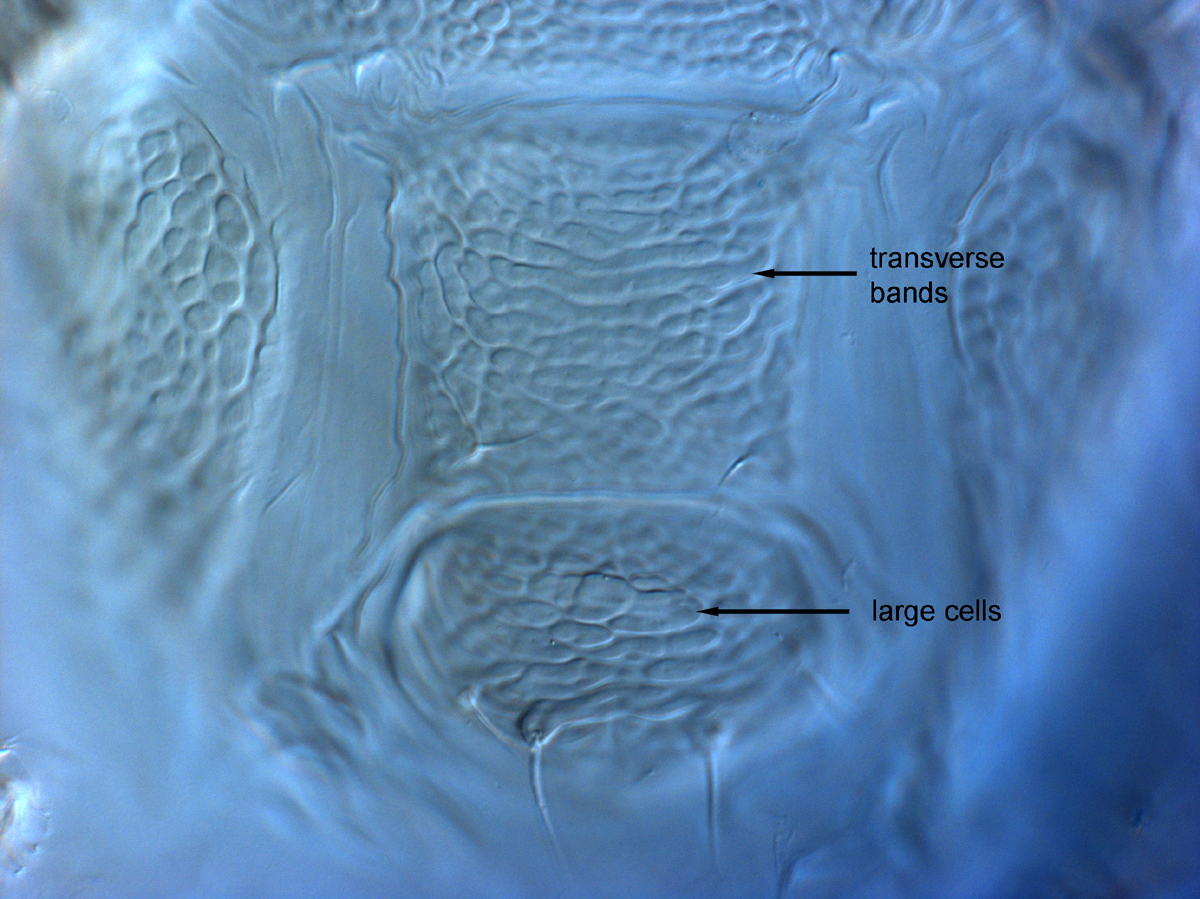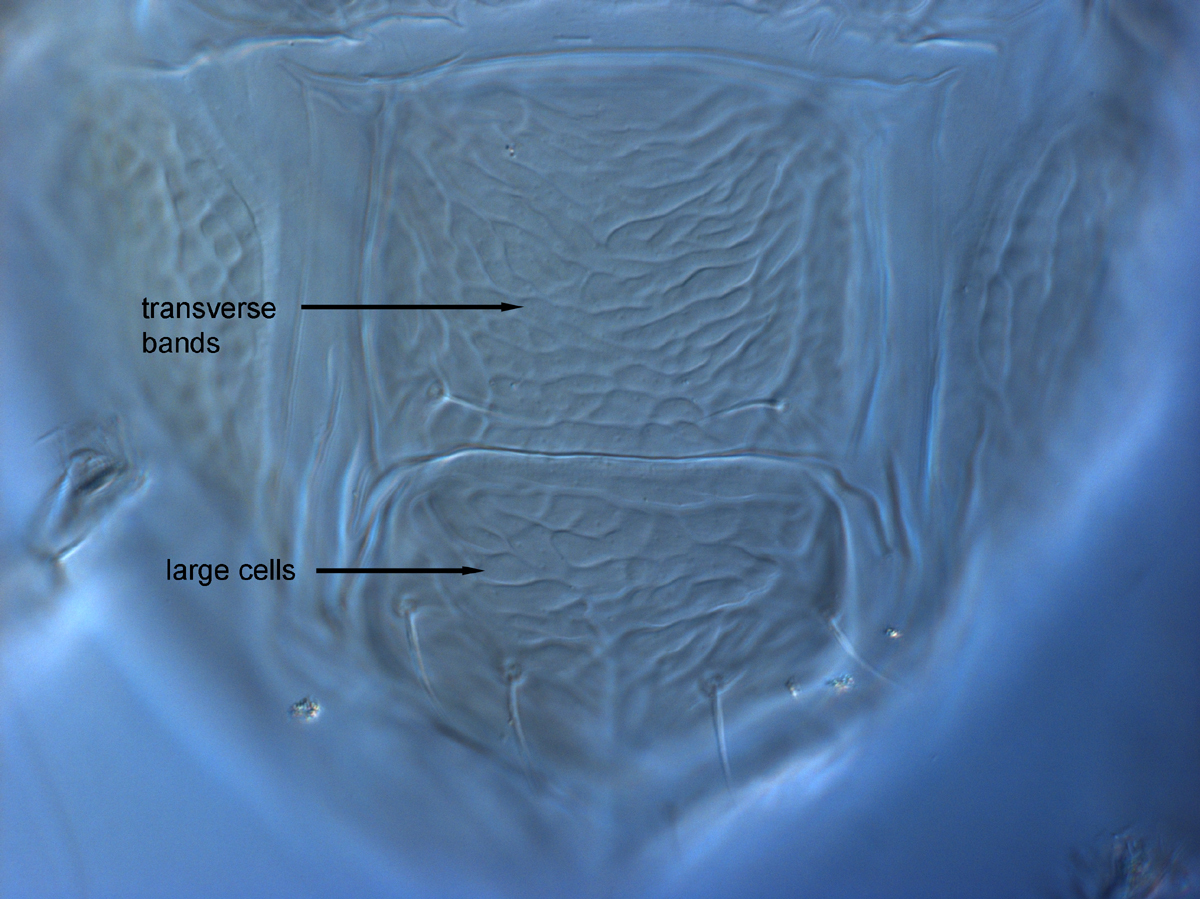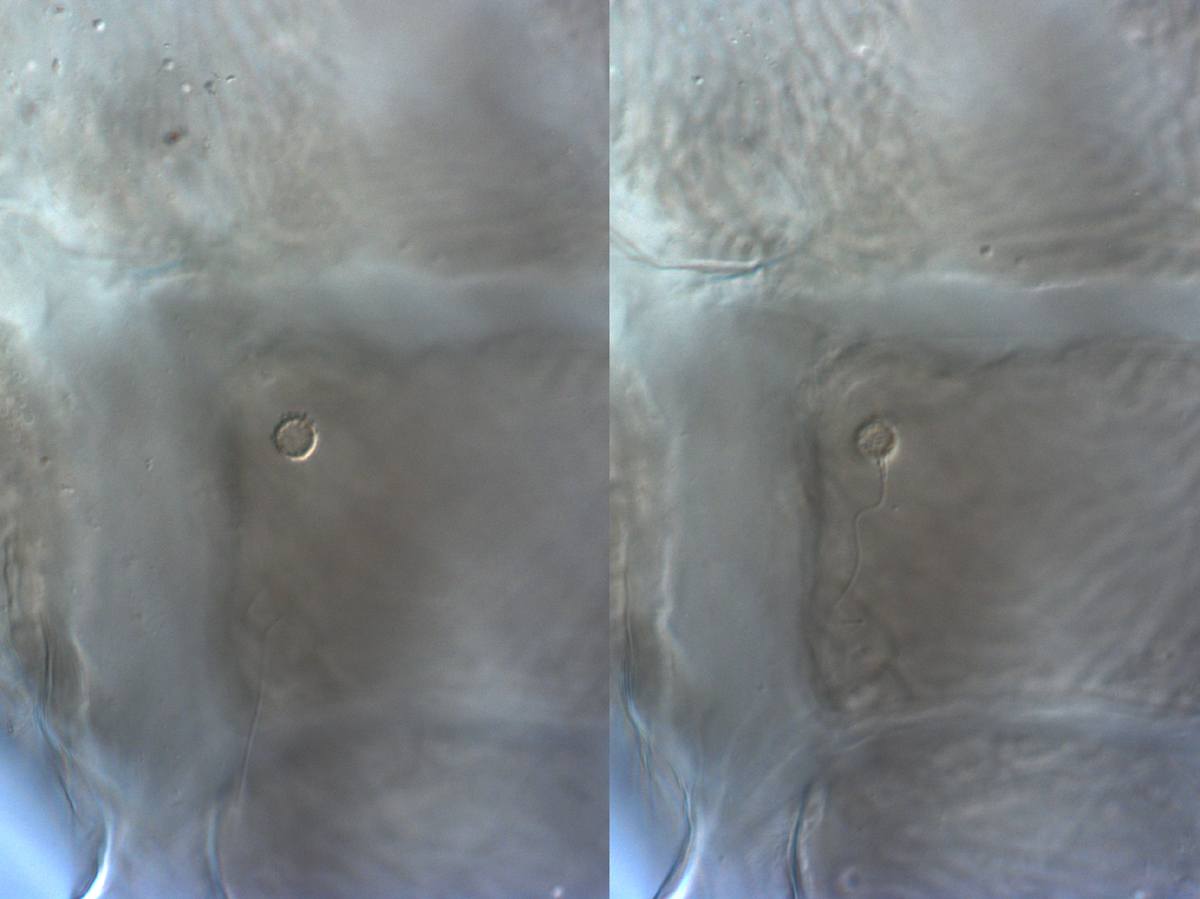Brevipalpus feresi
|
Fig. 1. Brevipalpus feresi, female dorsum. |
|
Fig. 2. Brevipalpus feresi, female dorsum. |
|
Fig. 3. Brevipalpus feresi, female prodorsum. |
|
Fig. 4. Brevipalpus feresi, female anterior dorsal opisthosoma. |
|
Fig. 5. Brevipalpus feresi, female central dorsal opisthosoma. |
|
Fig. 6. Brevipalpus feresi, female central dorsal opisthosoma. |
|
Fig. 7. Brevipalpus feresi, female central dorsal opisthosoma. |
|
Fig. 8. Brevipalpus feresi, female posterior dorsum. |
|
Fig. 9. Brevipalpus feresi, female microplates on dorsal cuticle (15,000 X) (Image taken by G. Bauchan, USDA-ECMU). |
|
Fig. 10. Brevipalpus feresi, female dorsal seta on palp (indicated by arrow). |
|
Fig. 11. Brevipalpus feresi, female venter, between coxae III-IV. |
|
Fig. 12. Brevipalpus feresi, female venter, between coxae III-IV. |
|
Fig. 13. Brevipalpus feresi, female venter, between coxae III-IV. |
|
Fig. 14. Brevipalpus feresi, female posterior venter. |
|
Fig. 15. Brevipalpus feresi, female posterior venter. |
|
Fig. 16. Brevipalpus feresi, female posterior venter. |
|
Fig. 17. Brevipalpus feresi, female posterior venter. |
|
Fig. 18. Brevipalpus feresi, female spermatheca. |
Authority
Previously listed as Brevipalpus phoenicis species group sp. E.
Beard, J.J., Ochoa, R., Braswell, W.E. & Bauchan, G.R. (2015) Brevipalpus phoenicis (Geijskes) species complex (Acari: Tenuipalpidae) — a closer look. Zootaxa, 3944(1), 1-67. (open access: http://www.mapress.com/zootaxa/list/2015/3944%281%29.html)
Species group characters
Brevipalpus phoenicis species group
Dorsal opisthosomal setae f2 absent; tarsi II with 2 solenidia (one adaxial, one abaxial). Palps four segmented, setal formula 0-1-2-3(1s+2e) (s = solenidion, e = eupathidium).
Setal formula for legs I-IV (coxae to tarsi): 2-2-1-1, 1-1-2-1, 4-4-2-1, 3-3-1-1, 5-5-3-3, 9(1)-10(1)-5-5. Leg chaetotaxy: feI-II d, l', v', bv", fe III d, ev', fe IV ev'; ge I-II d, l', l", ge III-IV l'; ti I-II d, l', l", v', v", ti III-IV d, v', v".
Distribution based on confirmed specimens
Brazil
Species characters
Adult female habitus
Figures 1, 2
Prodorsum
Central (Fig. 3): cuticle with strong, broad areolae
Sublateral (Fig. 3): posterior region with reticulation forming broad rounded cells; anterior region mostly smooth
Opisthosoma
c1-c1 to d1-d1: cuticle smooth to wrinkled (Fig. 4)
d1-d1 to e1-e1: cuticle with irregular folds (Figs. 4, 5, 6, 7)
e1-e1 to h1-h1: cuticle with a short series of transverse folds, becoming longitudinal folds towards h1-h1 (Figs. 4, 5, 6, 8)
Sublateral: cuticle reticulate with large, uniform, distinctly rounded cells (Fig. 7); may be somewhat elongate towards h1
Dorsal microplates
Separate individual, rounded to irregularly rounded plates, with multiple short irregular ridges on dorsal surface aligned in apparently random directions; no series of parallel ridges present (Fig. 9)
Palp
palp femurogenu with barbed, broad flat dorsal seta (Fig. 10)
Venter
Setae 4a-ventral plate (Figs. 11, 12, 13): cuticle verrucose, with separately formed rounded "warts"; central cuticle with transverse bands (formed by fused "warts") (Fig. 11); bands maybe weakly developed (Fig. 12) or broken into elongate "warts" (formed by fused "warts") (Fig. 13); central cuticle without separately formed "warts"
Ventral plate (Figs. 14, 15, 16, 17): cuticle weakly verrucose, with little or no separately formed "warts"; "warts" are fused to form transverse bands
Genital plate (Figs. 14, 15, 16, 17): uniformly verrucose or verrucose-reticulate, with large transversely elongate cells formed by fused or conglomerate "warts"
Spermatheca
A long narrow convoluted duct terminates distally in a small rounded vesicle with a weakly formed crown of short projections (Fig. 18)
Hosts based on confirmed specimens
Croton floribundus (Euphorbiaceae)
Remarks
Previously listed as Brevipalpus phoenicis species group sp. E.
Beard, J.J., Ochoa, R., Braswell, W.E. & Bauchan, G.R. (2015) Brevipalpus phoenicis (Geijskes) species complex (Acari: Tenuipalpidae) — a closer look. Zootaxa, 3944(1), 1-67. (open access: http://www.mapress.com/zootaxa/list/2015/3944%281%29.html)

